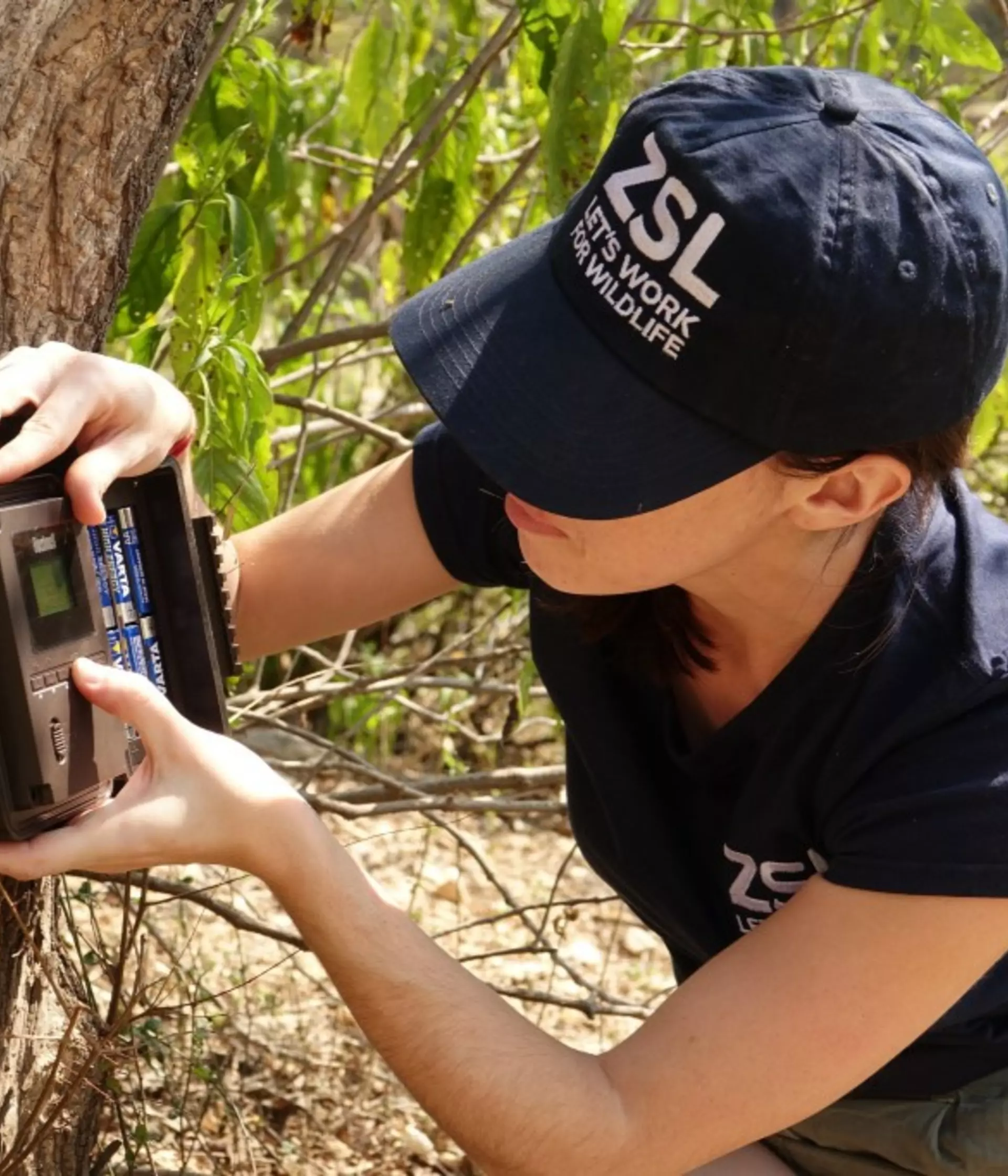We are a community of internationally recognised researchers and students working in conservation science.
Director of Science
Science Management Team
- Prof. Andrew Cunningham (Deputy Director)
- Cheryl Buffonge (Science Operations)
- Prof. Chris Carbone (Doctoral Training Programmes)
- Linda DaVolls (Science Communication & Impact)
- Prof. Trenton Garner (Science; Teaching)
- Dada Gottelli (Science Support)
- Prof. Nathalie Pettorelli (Equality, Diversity & Inclusion)
- Dr Marcus Rowcliffe (Teaching)
- Dr Jinliang Wang & Dr David Curnick (Postgraduate Support)
- Prof. Rosie Woodroffe (Key Performance Indicators)
Research staff
Professors
- Prof. Tim Blackburn (joint with University College London)
- Prof. Chris Carbone
- Prof. Andrew Cunningham
- Prof. Sarah Durant
- Prof. Johan du Toit
- Prof. John Ewen
- Prof. Trenton Garner
- Prof. Nathalie Pettorelli
- Prof. Samuel Turvey
- Prof. Rosie Woodroffe
Senior Research Fellows
- Dr Guy Cowlishaw
- Dr Robin Freeman
- Dr Becki Lawson
- Dr Malcolm Nicoll
- Dr Marcus Rowcliffe
- Dr Tony Sainsbury
- Dr Jinliang Wang
- Dr Chris Yesson
Research Fellows
- Dr Patricia Brekke
- Dr David Curnick
- Dr James Hansford
- Dr Catharine Horswill
- Dr Sahil Nijhawan
- Dr Adam Piper
- Dr Tom Letessier
- Dr Andrés Valenzuela-Sánchez
Postdoctoral Research Associates
- Dr Claire Collins
- Dr Clare Duncan
- Dr Benjamin Evans
- Dr Rosemary Groom
- Dr Henry Hakkinen
- Dr Audrey Ipavec
- Dr Phillip Jervis
- Dr Caio Kenup
- Dr Stephen Long
- Dr Heidi Ma
- Dr Nicholas Mitchell
- Dr Henrike Schulte to Buhne
- Dr Katharina Seilern-Moy
- Dr Tammy Shadbolt
- Dr Bethany Smith
- Dr Amanda Trask
- Dr Rosie Williams
- Dr Michael Williamson
Research Associates
- Dr Claudia Carraro
- Sophie Common
- Sarah Fowkes
- David Lewis
- Clare McNamee
- Dr Louise McRae
Research Assistants
- Stefanie Deinet
- Georgina Gerard
- Matthew Granger
- Sophie Ledger
- Valentina Marconi
- Sharmin Rouf
Project Managers & Coordinators
- Robert Deaville (Cetacean Strandings Project Manager)
- Louise Gibson (Bats & Bugs Project Coordinator & ZSL Biobank Manager)
- Heidi Ma (Hainan Gibbon Conservation Programme Coordinator)
- Nicole Milligan (Wildlife Ecology & Conservation Database Manager)
- Kate Scott-Gatty (London Hogwatch Project Manager)
Technical Staff
Science Support:
- Dada Gottelli (Chief Technician)
- Kevin Hopkins (Senior Technician)
- Shinto John (Microbiology Technician)
- Tresai Jordine (Animal Technician)
- Matthew Perkins (Senior Technician)
- Chris Sergeant (Named Animal Care & Welfare Officer)
Research Technicians:
- Kelly Astley
- Rebecca Foskett
- Georgina Gerard
- Chloe Hartland
- Bella Horwood
- Emily Jones
- Lucy Mooney
- Hannah Puleston
- Tania Trugman
Professional Staff
Science Operations:
- Cheryl Buffonge (Science Operations Manager)
- Rosa Cullen (Science Coordinator)
- Amrit Dehal (Senior Administrator)
- Breanna Kaufman (EDI & Science Review Boards Administrator)
Wildlife Health Bridge:
- Harriet Pinder (Wildlife Health Bridge Coordinator)
- Alexandra Thomas (Wildlife Health Bridge Course Manager)
- Amber Wyard (Wildlife Health Bridge Administrator)
ZSL Science Resources & Meetings
- Lucy Brown (Public Engagement with Science Manager)
- Linda DaVolls (Head of Science Resources & Meetings)
- Harriet McAra (Science Communications and Events Manager)
- Elina Rantanen (Journals Manager)
- Isla Watton (Soapbox Science Coordinator & Science Media Project Manager)
Honorary Research Associates
- Dr Caitlin Andrews (Tufts University)
- Dr Sarah Ball
- Dr Kieran Bates (University of Oxford)
- Dr Stefano Canessa (University of Bern)
- Dr Charles Foley (Lincoln Park Zoo)
- Dr Tony Fooks (Animal and Plant Health Agency)
- Dr Michael Hudson (Durrell Wildlife Conservation Trust)
- Dr David Jacoby (University of Lancaster)
- Prof. Kate Jones (University College London)
- Dr Goncalo Rosa (University of Lisbon)
- Prof. James Wood (University of Cambridge)
IoZ PhD Students
- Alice Armstrong
- Rodolfo Assis Magalhães
- Peggy Bevan
- Madison Bowden-Parry
- Timothy Brown
- Ben Chapple
- Lucy Clarke
- Merry Crowson
- Zoe Dennehy
- Rosalie Dowell
- Thomas Dwyer
- Hazel Farthing
- Hayley Free
- Adrien Gelle
- Marianne Glascott
- Henry Grub
- Shuiqing He
- Cheryl Heard
- Rachel Hester
- Emily Jordan
- Simon Kenworthy
- Nikolet Kostur
- Zosia Ladds
- Damaris Landers
- Jennifer Linden
- Rebecca Louch
- Connor Lovell
- Jason Lynch
- Vance Mak
- Valentina Marconi
- Christopher McCabe
- Katherine McCoy
- Lucy Mead
- Verity Miles
- Mollie Mills
- Dennis Minja
- Matthew Mitchell
- Daisy O'Neill
- Philippa Oppenheimer
- Harrison Ostridge
- Jennifer Panitz
- Benjamin Parker
- Bethany Pittard
- Joshua Powell
- Amelia Ramage
- Harri Ravenscroft
- Vittoria Roatti
- Gabriella Santini
- Jessica Savage
- Isha Shyam
- Carolyn Thompson
- Eleanor Tinsley
- Joseph Trafford
- Jessica Turner
- Ceri Webster
- Cameron White-Spunner
- Ben Williams
- Jake Williams
- Francis Windram
- Hannah Wood
Overseas PhD Students
- Catarina Dias Coutinho
- Shiquing He
- Aichi Mkunde Josephat Mnenge
- Dedan Ngatia
- Ioana Popescu
- Mmadi Reuben
- Udayanga Sampath
